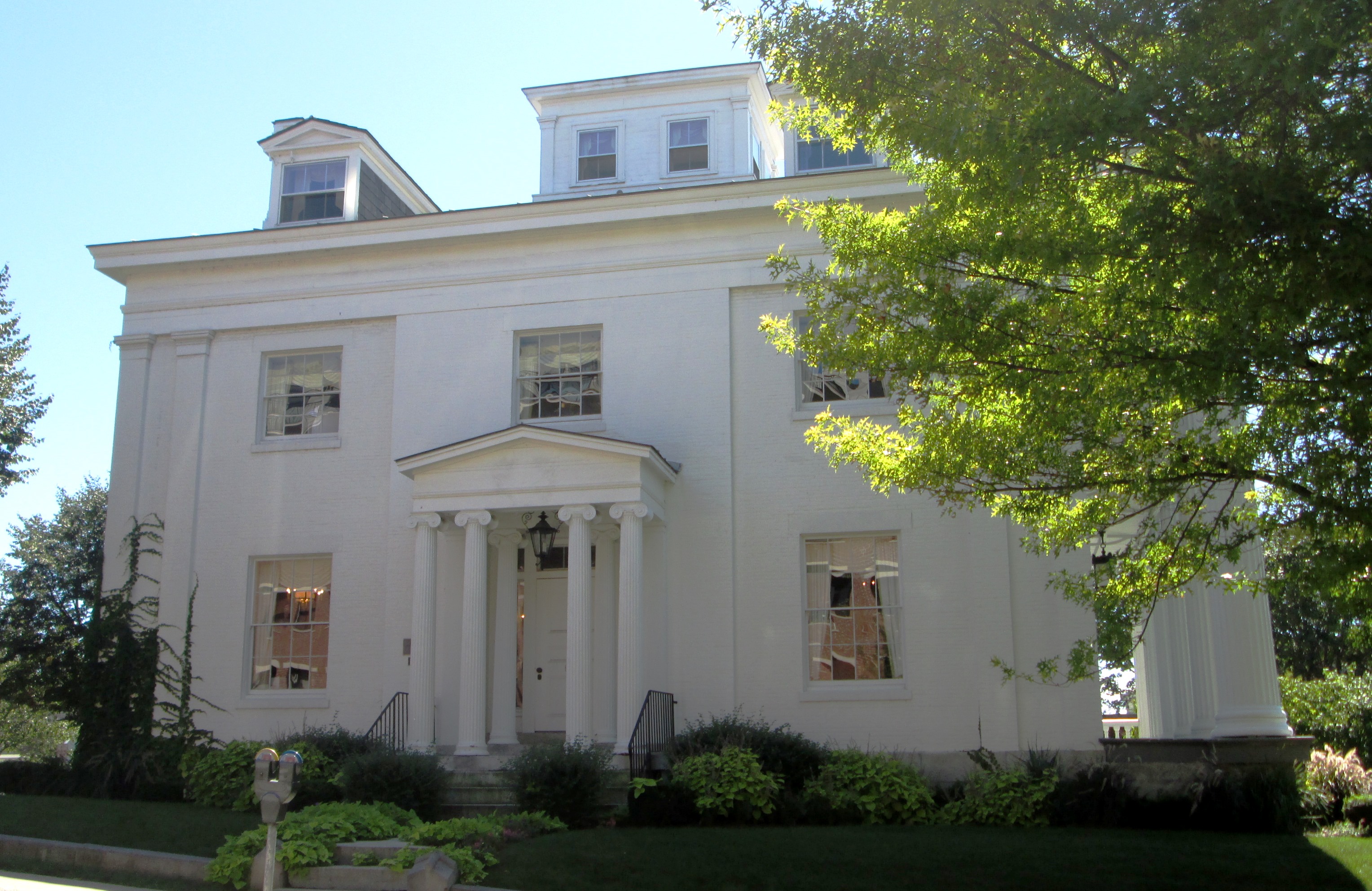Follett House on:
[Wikipedia]
[Google]
[Amazon]
The Follett House is a historic house at 63 College Street in
 The house was built in 1840 for Timothy Follett (1793-1857), a real estate developer and later a railroad executive. It was designed by
The house was built in 1840 for Timothy Follett (1793-1857), a real estate developer and later a railroad executive. It was designed by
Burlington, Vermont
Burlington is the most populous city in the U.S. state of Vermont and the seat of Chittenden County. It is located south of the Canada–United States border and south of Montreal. As of the 2020 U.S. census, the population was 44,743. It ...
. Built in 1840 for a prominent local businessman, it is the last surviving grand 19th-century lakeside mansion in the city, and one of the state's finest examples of Greek Revival architecture. It was listed on the National Register of Historic Places
The National Register of Historic Places (NRHP) is the United States federal government's official list of districts, sites, buildings, structures and objects deemed worthy of preservation for their historical significance or "great artistic v ...
in 1972. It has seen commercial and institutional uses since 1885.
Description and history
The Follett House stands prominently overlooking Burlington's waterfront, at the southwest corner of college and South Champlain Streets. The house is oriented facing west towardLake Champlain
, native_name_lang =
, image = Champlainmap.svg
, caption = Lake Champlain-River Richelieu watershed
, image_bathymetry =
, caption_bathymetry =
, location = New York/Vermont in the United States; and Quebec in Canada
, coords =
, type =
, ...
, with a terraced lawn extending westward to Battery Street. It is a -story brick structure, with a gabled roof, clapboarded exterior, and stone foundation. The main facade is five bays wide, with a projecting Greek temple front with five fluted Doric columns supporting an entablature and gabled pediment. Ground floor windows are long behind the temple front, and the second floor has a balcony stretching across its width. A secondary entrance on the north side (facing College Street) is sheltered by a portico. The roof is adorned by a square cupola which was added in the 1880s. with
 The house was built in 1840 for Timothy Follett (1793-1857), a real estate developer and later a railroad executive. It was designed by
The house was built in 1840 for Timothy Follett (1793-1857), a real estate developer and later a railroad executive. It was designed by Ammi B. Young
Ammi Burnham Young (June 19, 1798 – March 14, 1874) was a 19th-century American architect whose commissions transitioned from the Greek Revival to the Neo-Renaissance styles. His design of the second Vermont State House brought him fame and su ...
, whose other credits include the Vermont State House. Follett lost his fortune in the 1850s when the Rutland Railroad went bankrupt, and the house was owned by a series of executives, ending with Dr. B.S. Nichols, a local industrialist. Since 1885 the house has had a variety of institutional owners, including the local chapter of the Veterans of Foreign Wars
The Veterans of Foreign Wars (VFW), formally the Veterans of Foreign Wars of the United States, is an organization of US war veterans, who, as military service members fought in wars, campaigns, and expeditions on foreign land, waters, or a ...
. It is one of the state's finest examples of Greek Revival architecture, and is that last surviving mansion of a series that once stood facing the waterfront.
See also
*National Register of Historic Places listings in Chittenden County, Vermont
__NOTOC__
This is a list of the National Register of Historic Places listings in Chittenden County, Vermont.
This is intended to be a complete list of the properties and districts on the National Register of Historic Places in Chittenden Count ...
References
{{NRHP in Chittenden County, Vermont Houses on the National Register of Historic Places in Vermont National Register of Historic Places in Burlington, Vermont Greek Revival architecture in Vermont Houses completed in 1840